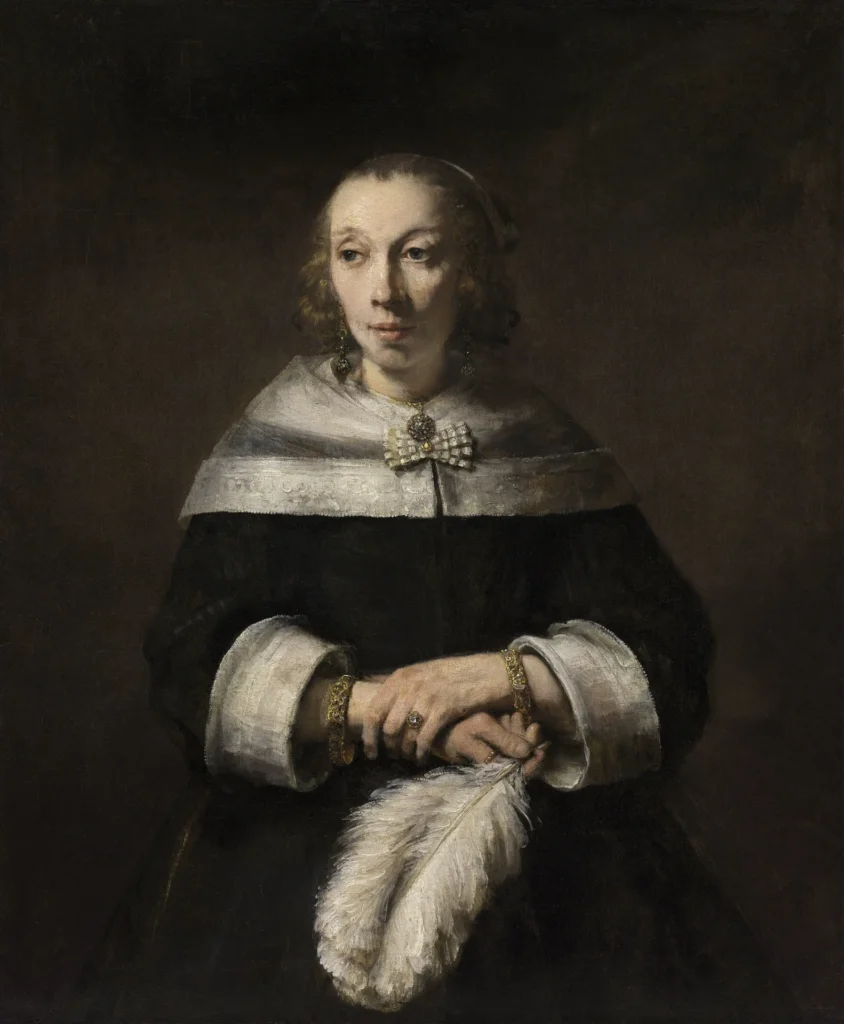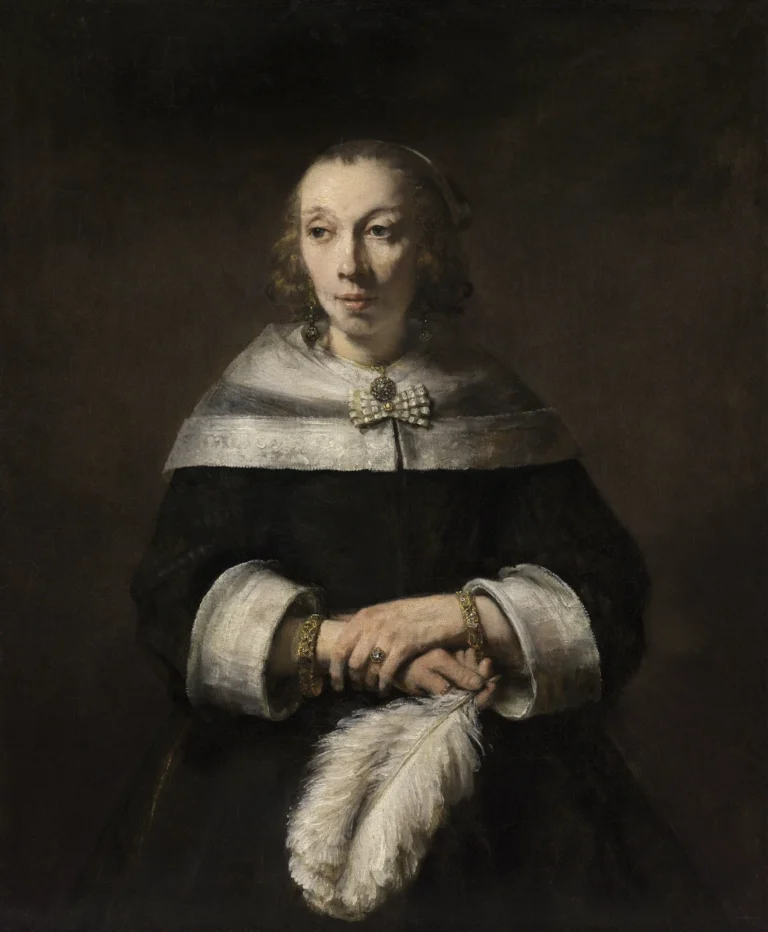Portrait of a Lady with an Ostrich-Feather fan
Portrait of a Lady with an Ostrich-Feather fan captures a woman elegantly posed against a dark background. Rembrandt emphasizes her pale complexion, intricate lace collar, and luxurious black dress, with the striking addition of a white ostrich-feather fan. The intimacy of the moment is conveyed through her posture and the overall composition, indicative of Rembrandt's adeptness in rendering human emotions and interactions during the 1650s.
1658-1660
About the Artwork
The story behind this artwork is steeped in the social and cultural milieu of 17th-century Holland. Believed to be a companion piece to another portrait by Rembrandt, the painting highlights the subtle interactions between its subjects, inviting viewers into a moment of quiet intimacy. Its early provenance points to its significance, entering the private collection of Prince Nicolai Yusupov in the 19th century and later captivating audiences at exhibitions, solidifying its place in art history. Remarkably, this painting survived the tumult of the Russian Revolution through the efforts of Prince Felix Yusupov, who safeguarded it during turbulent times.
Did You Know
Liked what you see? Add it to your collection.
Enjoyed reading? Share it.
... continued
Composition and Style
The painting depicts a woman from the hips up, set against a dark background. She has pale skin, wears a black dress, and holds a white ostrich-feather fan. The woman's hairstyle, costume, and jewelry are characteristic of the 1650s, including a translucent lace collar and plain white cuffs edged with lace.
Companion Piece
This portrait is believed to have been conceived as a pendant or companion piece to another portrait by Rembrandt. Both paintings feature subjects illuminated from the same angle, and they interact with a reserved yet poignant warmth. The man in the companion piece gestures toward the woman, while she glances in his direction with her fan inclined toward him.
Provenance
The early history of the painting is not well-documented, but by 1803, it had entered the collection of Prince Nicolai Yusupov in Saint Petersburg. The painting gained significant attention at the Rembrandt exhibition in Amsterdam in 1898. During the Russian Revolution in 1917, Prince Felix Yusupov, Nicolai's great-great-grandson, took the painting and other family heirlooms to London. In 1921, Joseph E. Widener purchased the painting, and it eventually became part of the National Gallery of Art in Washington, D.C.
Physical Details
The painting is oil on canvas, transferred to canvas, and measures 39 3/16 × 32 11/16 inches (99.5 × 83 cm).










